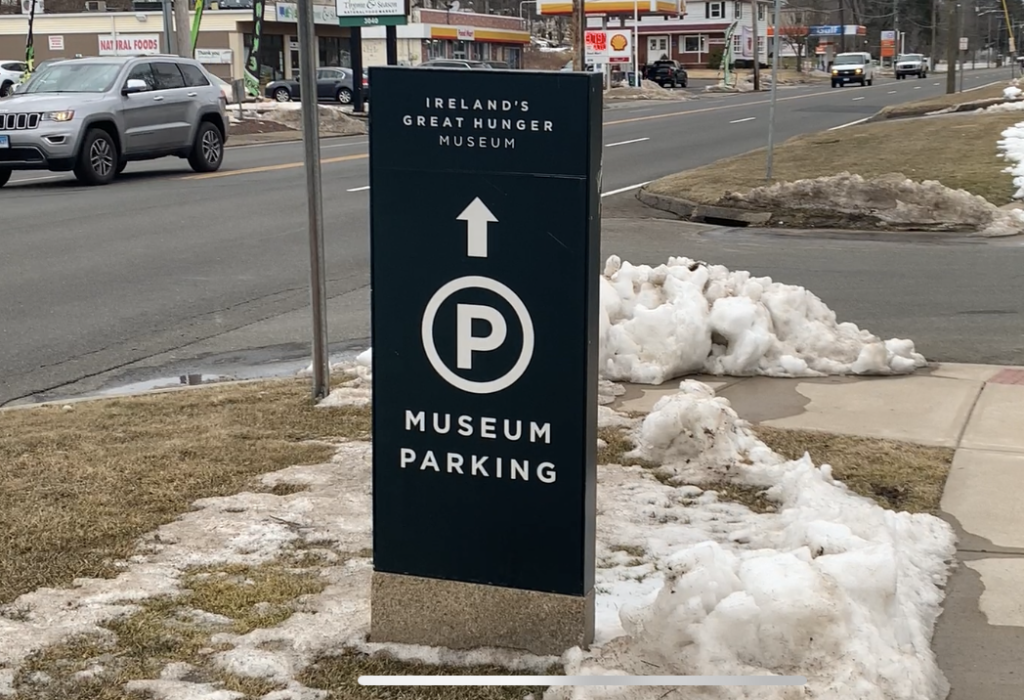When John Lahey became president of what was then called Quinnipiac College in 1987, he knew the Hamden, Connecticut school had potential but not much else outside of its small campus across from a state park. Yet during the next three decades, he transformed what had become Quinnipiac University into a 10,000-student enterprise, with law and medical schools in addition to a lineup of NCAA Division I athletic teams.
“Lahey really put Quinnipiac on the map,” said longtime Hamden resident Kathy Fitzsimons.
“So much has changed since the early days…It’s pretty remarkable to see what they changed and how much the school built up.”
Lahey did so by navigating increasingly complicated relationship dynamics with Hamden towards the end of his tenure, a town of 61,500 that alternated between embracing the school and pushing back on its propositions. A duality exists: Many in the town acknowledge the additional opportunities that Quinnipiac’s growth provides, but negative connotations with the school have continued to intensify in recent years. Reports of town-university conflicts aren’t new; Many have periodically voiced displeasure at some of the decisions and realities associated with Quinnipiac’s profound growth.
Under current president Judy Olian, the town-gown conflicts are accruing while the school embarks on another wave of expansion. Quinnipiac has expanded its horizons quite literally, from a three-to-five figure enrollment, a 500% increase in total acreage and plans to keep expanding for the foreseeable future: A new Recreation center in Fall 2022 equipped with a rock-climbing wall and plans for a new $244 million ‘South Quad’ project aiming for 2024 are two of the headlining developments.
“This unprecedented set of investments, the first stand-alone new buildings on the Mount Carmel Campus since the early ‘90s, will enable necessary advances in academic, research and student learning-living experiences at QU for years to come,” said Olian in a prepared statement released during the announcement. “They are critical in achieving the ambitious goals articulated in our strategic plan as we create the University of the Future.”

“There’s some animosity, and a lot of it stems from the fact that we have the highest Mill rate in Connecticut for a non-city town. People are more desperate to find ways of relief, and it’s easy to blame Quinnipiac because they do own a lot of property in Hamden and have been largely tax-exempt for years,” said Al Lotto, a longtime resident and former mayoral candidate of Hamden.
The Mill Rate measures the amount of property tax in relation to assessment. Only Hartford (74.29) has a higher rate in Connecticut; Taxes are sky-high and residents feel uneasy about the tax exemptions, regardless of Quinnipiac’s role as a local economic driver. A recently proposed budget would bring about even more tax increases.

Quinnipiac is tax-exempt on 34 of its 136 properties between Hamden and North Haven. Tax exemptions aren’t unprecedented (many universities get lessened taxes in part due to their roles as economic drivers and influencers), even for private universities. But 33 of those tax-exempt properties reside in Hamden. According to the New Haven Register Hamden, Quinnipiac paid over $600,000 in taxes back in 2018, although the town of Hamden stood to gain over $10 million in taxes if not for existing tax exemptions on Hamden-located property.
“A lot of people (over the age of 50) are getting priced out of Hamden, and they’re just not really doing much to help them stay. People think ‘what have they done to help me stay here?’” continued Lotto.
The university undoubtedly provides considerable business and notoriety to Hamden, North Haven and other surrounding towns. According to an economic impact study of CT’s independent colleges published in 2021, Quinnipiac trailed only Yale and Sacred Heart in terms of total impact on economic activity among Connecticut independent colleges and universities. Quinnipiac has given significant donations to Hamden over the years, including a seven-figure one to the town back in 2017. The university regularly initiates food drives and fundraisers for local causes. Quinnipiac is known for pouring many thousands of volunteer hours back into the community via its annual Big Event every April. Additionally, they adopted a strategic sustainability plan in Fall 2020 and was rewarded for its environmental initiatives last month.
Acting as if the university never acts philanthropically isn’t accurate. But beautiful buildings being built on campus come with higher expectations from residents, resulting in more disappointment when longtime fixtures of the town are left by the wayside, for example.
“Many people in Hamden were upset about the AM radio station leaving. And the Irish (Great) Hunger Museum on Whitney Avenue? It would’ve been so easy to keep that. It cost almost no money to the university, and was just a gem. It’s just a shame they didn’t even try to keep that, ” said Fitzsimons.



Outside of Ireland’s Great Hunger Museum on Whitney Avenue. (photos by Andrew Marshall)
WQUN, the AM radio station, broadcasted for over two decades before being sold in 2019 despite backlash from within the Hamden community and Quinnipiac radio leaders, also from student body-led WQAQ.
“Quinnipiac does good for the town too. It’s just easy given everything for people to point fingers when stories hit the paper that they’re knocking down historic homes on Whitney, these are things that stick in their minds,” said Lotto.
“Even though Quinnipiac University does a good job with their storm water treatment and drainage, there is still a lesson to be learned because in Hamden, it was in the paper where all these little nip bottles are being dumped into/are being found in the storm sewers,” said Tim Mack on an Inland Wetlands Commission Meeting held via Zoom on May 4th, where Hamden residents gave feedback regarding the construction plans and modifications in place for the South Quad, particularly regarding storm drainage issues.
Quinnipiac affiliates on the call, namely Bethany Zemba, VP of Strategy/Community Relations and Chief of Staff for President Olian, assured commitment from the university regarding relevant environmental initiatives.
Quinnipiac is already growing as it is. Although current relationship dynamics remain complicated with Hamden, extra efforts here and there to keep some of the town’s history intact might go a long way for Quinnipiac’s own initiatives – for the South Quad and beyond.
